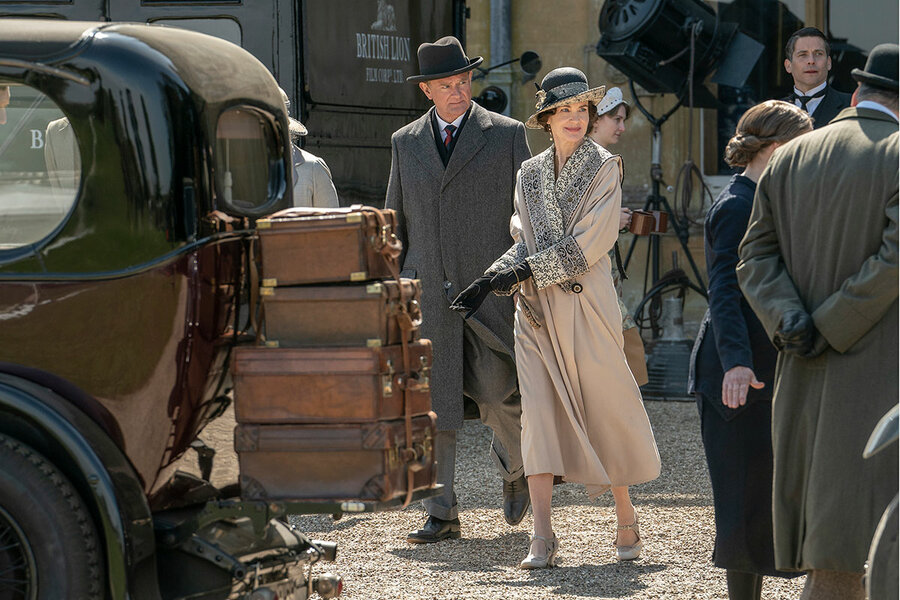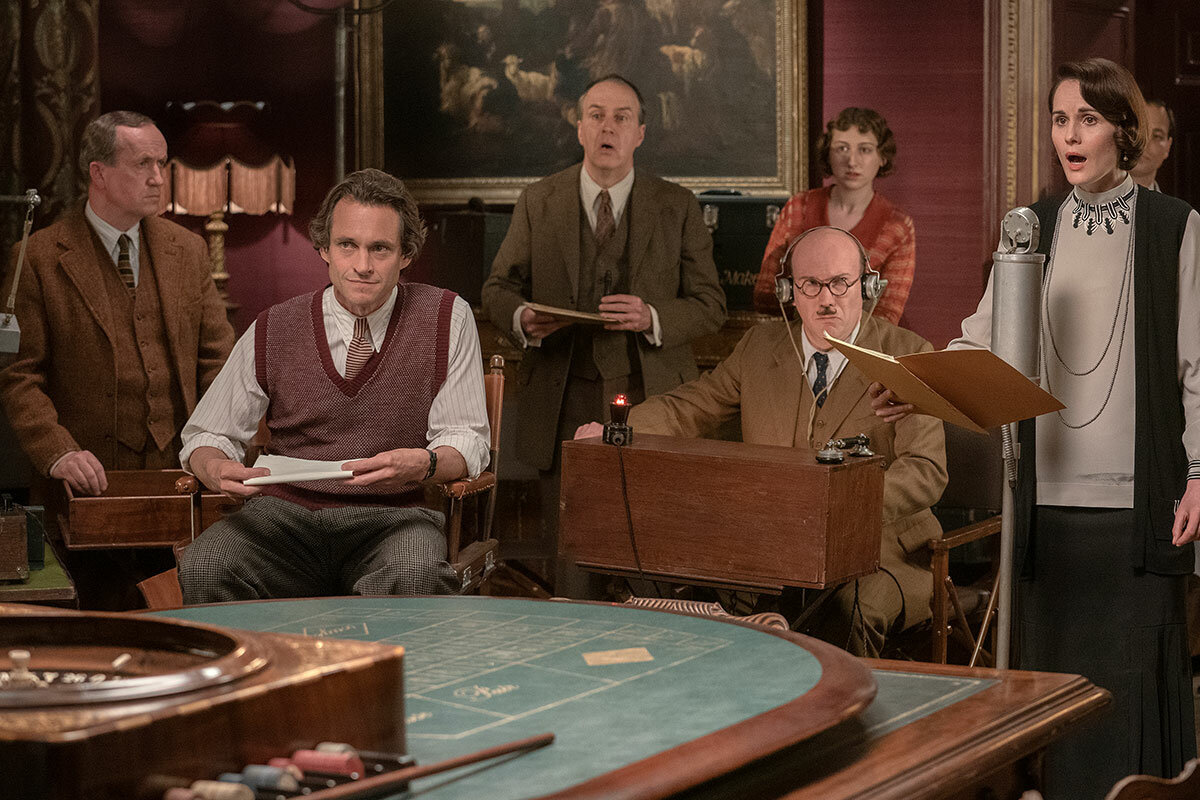‘Downton Abbey’: Is a Crawley road trip the diversion filmgoers need?
Loading...
When it was announced that the sixth and final season of “Downton Abbey” would be followed-up by a film, there was much skepticism from critics and fans alike.
They were unsure if its large ensemble of characters and storylines would be suited to the big screen. Even some cast members were doubtful about the transition. Before its release, the show’s Dowager Countess of Grantham, Dame Maggie Smith, voiced her concerns. Kevin Doyle, who plays footman-turned-teacher Joseph Molesley, recently shared with the Monitor that he had similar qualms.
“When we were filming the last season they mentioned the idea of making a movie and I was always a little trepidatious,” Mr. Doyle recalls. “Because certainly in Britain, I don’t think there’s ever been any great precedent of TV shows transferring successfully to the big screen. So I was a little nervous.”
Why We Wrote This
The stories of “Downton Abbey” have been told for more than a decade on TV and film. With the release of a second movie, how is the popular franchise about aristocrats and the people who serve them staying relevant?
The first film’s monumental box-office success upon its release in September 2019 – ultimately grossing more than $190 million worldwide from a budget of $20 million – immediately proved the doubters wrong.
Phyllis Logan, who plays head housekeeper Elsie Hughes, says that following the triumphant release of the original film, a sequel was always going to be inevitable. “The fact that fans loved the first one so much almost dictated that we had to do another one,” she says in an interview.
“Downton Abbey: A New Era,” which opens May 20 in U.S. theaters, is basically split into two separate storylines. After the dowager countess learns that she has inherited a villa in the south of France from a man she briefly knew in the 1860s, a group of the family travels down to inspect it. Meanwhile, back at Downton, a film crew wishes to use the estate as a location for a new silent movie, meaning that the staff has to look after the expectant cast.
Katherine Byrne, a lecturer in English at Ulster University in Coleraine, Northern Ireland, who has taught extensively about the show, suspects that Julian Fellowes – “Downton Abbey” creator and the writer behind both films – specifically picked these plots as he had determined two aspects of life that people have missed the most during the pandemic: “holidays abroad and the movies … hence the scenes filmed in the south of France look more like a James Bond film than anything from Downton,” she says. “But it gives viewers what they have been craving.”
“A mystery ingredient”
Going into production on the latest film, Mr. Doyle was once again concerned. This time around, he was worried that they wouldn’t be able to “top the storyline from the first movie.” That’s despite the fact that Mr. Fellowes, who previously won the best original screenplay Oscar for “Gosford Park,” has repeatedly shown that he knows exactly what “Downton Abbey” fans want to see.
“It takes an extraordinary person to create something which touches so many people across the world,” says Ms. Logan. “There are so many elements that make him such a great storyteller, especially since he has to integrate so many wonderful characters. Plus, there’s a mystery ingredient to his writing that you just can’t put your finger on.”
What makes the writing all the more impressive is just how seamlessly “Downton Abbey” has evolved from television to film. Not only does it look “lusher and grander,” according to Ms. Logan, but it allows Mr. Fellowes to tell a “bigger story that still has intimate moments.”
Viewers continue to see “Downton Abbey” in droves because it’s “an opportunity to reunite with old friends,” explains Dr. Byrne. “It also allows audiences to immerse themselves in the sumptuous costumes and sets. Even the Abbey itself looks like it was built to be enjoyed on the big screen.”
When it’s at its best, “Downton Abbey” has the “unique ability to provide viewers with an escape from hard times,” adds Dr. Byrne, who notes that the show immediately rose to prominence in September 2010, just a few years after the 2008 banking crash. “It offered the luxury of aristocratic wealth to viewers who in real life were dealing with a global recession.”
Today, an ongoing pandemic and worldwide cost-of-living increases offer a somewhat similar backdrop. “Downton Abbey: A New Era” topped the U.K.-Ireland box office when it opened the weekend of April 29, though its initial showing was less strong than the first film’s.
“Lives do not end at 40”
“Downton Abbey” has managed to stay relevant with audiences over the past 12 years thanks to its exploration of change, says Mr. Doyle. “Julian originally planned for the show to just be three seasons. He wanted to explore how the Great War [World War I] impacted the people who lived and worked in these great houses, and how their experiences made them want more from life. Over the seasons and films, Julian showed that all of the characters’ hopes and expectations changed.”
What has really helped set “Downton Abbey” apart from other historical dramas is how its romantic plots aren’t just restricted to its younger characters, says Dr. Byrne. “From Jane Austen adaptations to ‘Bridgerton,’ period dramas still too often focus on romance plots of the young and beautiful. But ‘Downton Abbey’ shows that lives do not end at 40. Interesting and often romantic plots do not have to end there either. No character is too old or too quirky to be denied love, marriage, and a new beginning in the show.”
Clearly those involved in “Downton Abbey” aren’t ready to say goodbye yet. Ms. Logan says that even though nothing has been discussed regarding a third film, “I’m sure all of us would love to do it.” She then teases, “The ending of the film lives up to the title of ‘A New Era’ and I think that gives hope that there could be something else around the corner.”
“Downton Abbey: A New Era” is rated PG for some suggestive references, language, and thematic elements. It is available in theaters.







